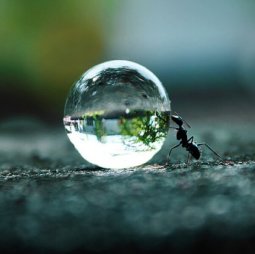So I’ve made this recipe belonging to a buddy of mine about five times without any anomalies and consistent flavour. It’s a simple method using an immersion blender, comes up a creamy golden brown, with a little separation continuing after a cloth-straining (no big deal as it’s blitzed into a creamy drink). It’s walnuts, honey, vanilla, water.
Out of nowhere this week, and originally to my absolute horror, as I began blending the walnuts into the honey it began to turn purple… and then black. What the hell had I done? What new element had I introduced? It was practically inky and the foam on top was cement grey-purple.
Turns out this is one the coolest accidents to come my way. It was an acid that is commonly found in the skins of walnuts, called gallic acid. After a bit of google searching I ended up on baking and beekeeping forums, and the wikipedia page of an ink used between the 15th-19th centuries, and this is what I’ve got:
- A problem for bakers is having their walnut breads turn purple because of gallic acids found in the skin.
- A highly sought after and quite rare type of honey that occurs naturally is dark purple. Many apiarists believe this is because of high acidity in the soil in the vicinity of hives.
- Iron gall ink was prepared using iron salts and tannic acids from oak gall nuts (where the name for gallic acid is derived.) A well prepared iron gall ink would gradually darken on the paper to a dark purple colour.
I totally triggered a chemical reaction accidentally. Perhaps the honey contained something that interacted with the walnuts? Maybe I didn’t bring the water entirely to the boil?
Now where do I find this actually purple honey, though?
